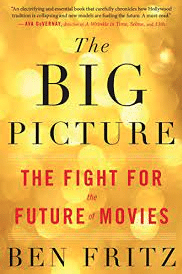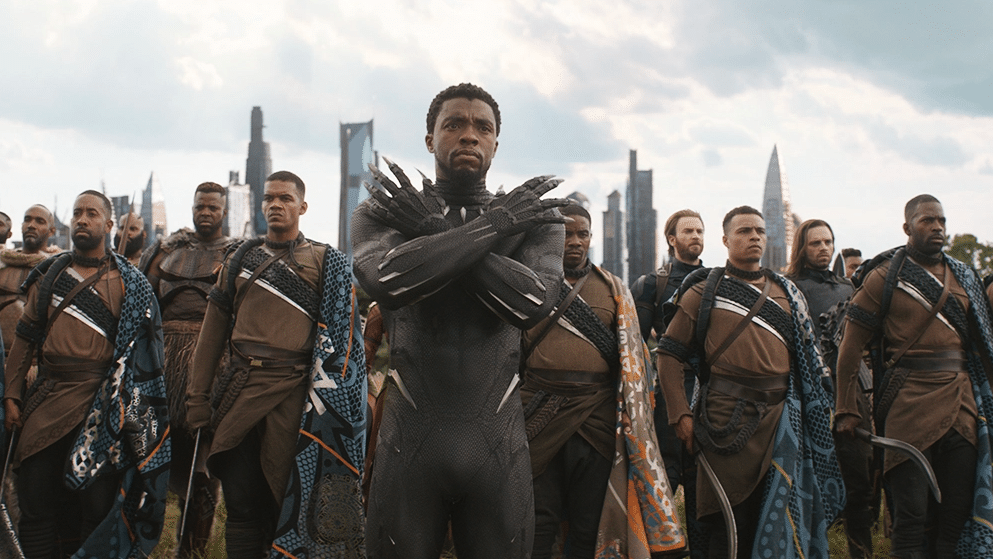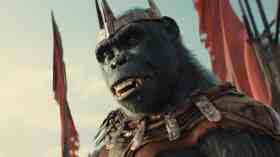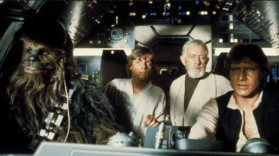This is a story about an almighty collision between technology, business and art.
Viewed from a distance, it’s like the map of a great battle, with arrows showing the movements and counter-movements of the opposing armies. A decisive battle, with winners and losers scattered about.
On the losing side: old-time studio executives, the specialty divisions of the major studios, anyone with a business built on DVDs. On the winning side, Marvel, Disney, Netflix and Amazon. Anyone with their foot on a cinematic universe.
The Big Picture: the Fight for the Future of Movies’ is US journalist Ben Fritz’s book length exploration of ‘the fight for the future of movies’. It covers a 20-year period in Hollywood history up to 2017.

Not the least of its appeal is Fritz’s deep dive into thousands of executive emails made public when Sony Pictures was hacked in 2014: a treasure trove of deal talk and insider gossip. But Sony and its two top movie executives, Amy Pascal and Michael Lynton, are just the stalking horse for Fritz’s real quarry, which is the transformation of the movie business by ‘cinematic universes’ in general and Marvel Entertainment in particular.
Starting with Sony gives Fritz the chance to talk about how movies used to be made before Marvel became marvellous. Think Zero Dark Thirty and Moneyball and The Social Network. In those days, a mid-budget movie could hit a cinematic home run, boosted along by DVD sales. So the studio made lots of them. And Amy Pascal was the star executive who know how to work with talent and find the heart of a story. Then that mighty collision happened.
Fritz hits his stride here, with the backstory of Marvel’s rise from languishing comic book publisher to spawner of universes. Marvel’s owner through this period, Ike Perlmutter, was a hard man to please. He knew toys but wouldn’t take the risk of a movie. Until a money man and Harvard MBA named David Maisel figured out a way to offload all the risk.
That was the match to the powder keg.
There are at least three ways to tell the story of the consequences of that match. We can talk about the players, or the technologies, or the movies themselves.
Starting with the tech, it’s a story about the decline of one technology – the DVD – and the rise of another – VOD (video on demand). DVDs underwrote the movie business for the best part of two decades. They turned movie audiences into movie collectors. So you could take the risk of a cinema release and if the movie failed, cover the losses with DVD sales.
But the coming of VOD brought an end to that business model. Why would anyone go to all the trouble of driving to a video store when they could subscribe to Netflix and watch every movie ever made without leaving home?
Switching now to the players, the Hollywood studios found themselves in a bind. Netflix had got the jump on them and they hadn’t yet launched their own streaming platforms to fight back. So they were making movies without a DVD or VOD backstop. That meant they needed movies that could open big and make all their money back in cinemas alone.
Enter Marvel. Its invention of the cinematic universe is arguably one of the great creative breakthroughs in movies – certainly from a business perspective. This is a model where a cast of characters can be brought back in various combinations from one movie to the next. Season after season, building story arcs, gathering fans and reducing risk.
Movies like Iron Man, The Avengers and Captain Marvel produced eye-popping box office grosses. Billions of dollars for a single movie. Warners quickly jumped in too, with its DC universe of Batman, Wonder Woman, Joker and Aquaman.
Even Sony got in on the act, with Spiderman and all its sequels and reboots. The cinemas and their studio suppliers were hooked. And of course, reviewers have seen plenty of positives in the end products. As Anthony Morris wrote recently for ScreenHub, while reviewing Marvel’s Black Panther: Wakanda Forever:
Every weakness here is balanced by a strength. The big final battle is, as is often the case in Marvel movies, a somewhat uninspired clash between forces on a floating base (only here the base is floating on water not air); gripping performances by Wright and (especially) Bassett provide solid ground even when the story wavers.
ScreenHub reviews Black Panther: Wakanda Forever
So what happened to old-fashioned mid-budget drama movies?
Well, they found a new home on the streaming VOD platforms, beginning with Netflix. Arguably, it was not that big a move – DVD to VOD. One small screen to another. What they lost, for the time being anyway, was the cinema window.
And in fact, the streaming platforms became more than just a convenient new home. With their massive audiences ‘demanding’ the best content, they began to stretch the idea of movies altogether, inventing a new format, the bingeable TV series, that melded movie quality and story complexity with TV length.
Perhaps the real winners in the fight Fritz describes will prove to be the filmmakers now making their mark in ‘Peak TV’. But that’s a story which has still to be written.
The Big Picture: The Fight for the Future of Movies (Mariner Books) is the first book read by the newly-formed Compton book club. The club is open to anyone interested in creative people, creativity and creative business. If you’d like to join, email the club.





